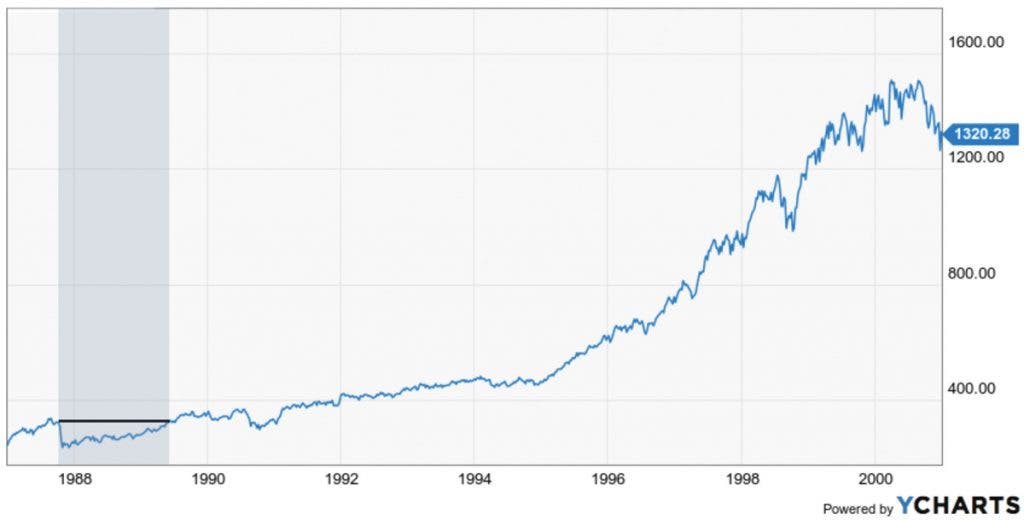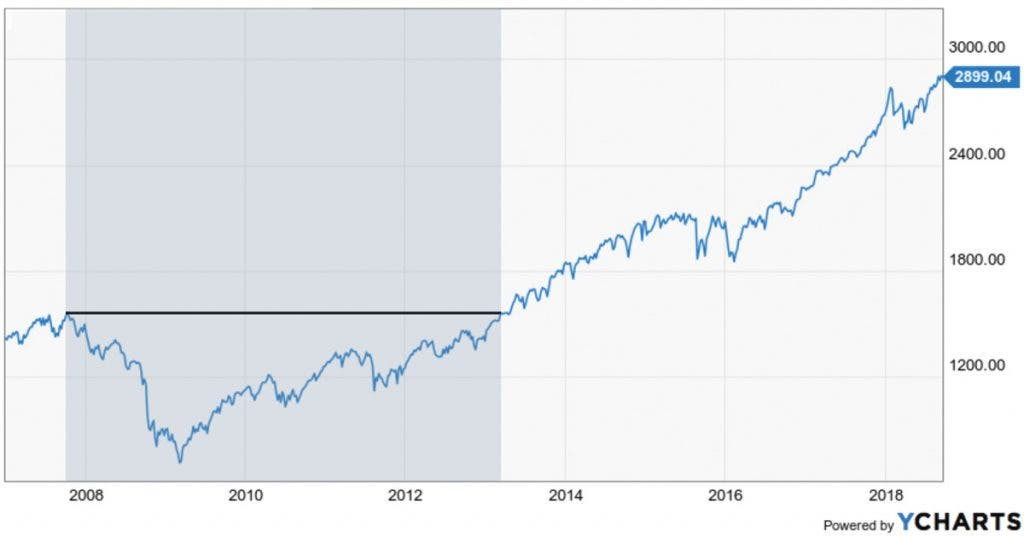• S&P 500 average length of a bull market is 97 months
• S&P 500 average length of a bear market is 18 months
Consider what are alleged to be the two longest running bull markets in modern financial history—one is the current one, purportedly starting back in March 2009, and the other one going from 1987 to 2000, some 12+ years in duration. Despite what appear to be clearly defined periods, there is still some debate as to which one is actually the longest.
For purposes of this piece, we may simply leave that argument to others in the media, or to those who currently wish to use this bull market as a clarion call to demonstrate political excellence.
It is interesting to note that these two “champion bulls” both started after severe market crashes. Also of note, is that by definition a bull is traditionally defined to continue running so long as there is no stock market decline of 20% or more, and the longest bull period, which was continuous throughout the 1980s and 1990s, had one 19.9% downturn along the way—whew, just made it!
In any case, it is very important for us today to realize that it is foolhardy to base investment decisions on the length of a bull market, especially when we cannot really define when one begins or ends.
Let’s look a bit more closely at the crashes of 1987 and 2008:
| S&P 500 CRASH OF 1987 | Chart from pre crash to the “end of the bull market” |
 |
It took the market 2 years in the above example to recover from the crash of Black Monday 1987. Once the market got back to pre-crash levels it continued its historic bull run. Does that mean that the length quoted in the annals of financial history should be 2 years shorter?
| S&P 500 CRASH OF 2008 | Chart from the peak in 7/2007 to present |
 |
Here you see that the current S&P 500 bull market period did not recover to pre-crash levels of 2008 until January, 2013, almost 5 years later! So, did the current bull market start in 2008 or 2013? If it is the latter, then the current bull market is “only” 5 years running.
It would seem most prudent then to ignore the current headlines stating “this bull market is now the longest bull market in history!” illustrated in the above charts. As shown, pinpointing the start of a bull market may be in the eye of the beholder. Additionally, attempting to predict a market turn, and thus the end of the current bull market, based solely on its age is a useless endeavor (thus the old adage “Bull markets don’t die of old age”). Either way, the relative length of a bull market seems to be nebulous, and certainly not the overarching basis for making specific, or even broad-based, investment decisions.
At BWFA we look beyond the media headlines and focus on prudent long term investment decisions based on our long-standing investment process, our clients’ financial plan, backed by sound research.
Joseph Manfredi | MBA | Chief Operating Officer / Senior Portfolio Manager | jmanfredi@bwfa.com



